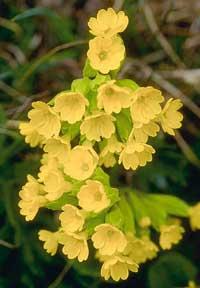In the heart of spring, the heart of spring

Primulaceous typical spring. Perhaps the reader remembers what we wrote two springs ago about the early flower of St. Joseph of the same genus, so we will not reformulate here the general characteristics referring to the families and genera of this species.
As for the spring flower, it is a herbaceous plant, medium-small size of 10-30 cm, with a short rhizome in the roots. The leaves are placed in roses at the foot of the plant. The upper part of the leaf is intense green and the lower part grayish.

The flowers grow at the ends of the long and form cherries. They are very abundant and intense yellow. Depending on the altitude, it blooms between March and June. Fruit, the capsule is ovoid and contains numerous seeds.
The spring flower can be found from sea level to mountain peaks and in different places, so that it is dispersed in cliffs, heathlands, pastures, boxwood and oak groves, mainly. Quite common in Álava and Navarra. In Europe, for its part, the distribution is wide, reaching Caucasus and Siberia.
This species has been widely used as a medicinal herb, its substances include saponin called primuline and the various glycosides. All parts of this plant are used and the rhizomes are the most appreciated. They are often used against cataract, bronchitis and flu, and are very good expectorant.
The flowers, on the other hand, have been considered diuretic and antispasmodic, and the leaves are considered rich in vitamin C. Warn of possible dermatosis in the deceased. On the other hand, it is worth mentioning that this plant is one of the most used in the gardens between the primulaceae.
Family: primulaceae |





